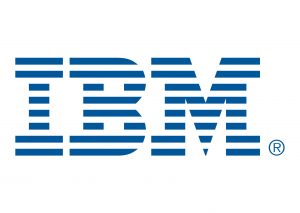
Technology was booming in the 1880s. It was as though everybody and their mama had some new invention to usher in. Some inventions failed, some inventions succeeded. Several companies with successful inventions would go on to merge as one: Computing – Tabulating – Recording Company (C-T-R) (Chronological History of IBM). In four years–under Thomas J. Watson’s leadership– C-T-R would double its revenue (Chronological History of IBM). Moving into the 1920s, having experienced immense growth and undertaking new activities, C-T-R decided it had outgrown its name (Chronological History of IBM). Thus on Valentine’s day, 1924, C-T-R changed to International Business Machines Corporation (Chronological History of IBM). The reason for the name change was that the corporation was expanding globally: “During Watson’s first four years… expanded the company’s operations to Europe, South America, Asia and Australia” (Chronological History of IBM). IBM not only survived during the 1930s Great Depression, it thrived, becoming one of the first corporations to provide: group life insurance, survivor benefits, and paid vacation (Chronological History of IBM).
Moving into the 40s, IBM was vital to the U.S. war efforts (Chronological History of IBM). It manufactured over three dozen different types of weaponry and “establish[ed] a fund for widows and orphans of IBM war casualties” (Chronological History of IBM). In the second half of the 40s, IBM introduced the first machines “that could execute long computations automatically”–calculators (Chronological History of IBM).
It should be noted that IBM’s activities during WWII are controversial to this day. IBM technology was used by Nazis in the undertaking of the Holocaust (Ramasastry). For its alleged complicity in the genocide, IBM has been taken to court numerous times (Ramasastry). IBM denies aiding and abetting Nazis, saying “that by this time this occurred, the Nazis had already taken over Dehomag — so that IBM had no control over operations there, or over how Nazis used IBM machines” (Ramasastry). In 2001, IBM donated $3 million to a German Holocaust Fund, making it clear however that it does not admit liability (Ramasastry).
The 50s saw IBM’s creation of the first computers, used for “business applications such as billing, payroll and inventory control”–basic functions modern computers (Chronological History of IBM). IBM further changed the game in 1959, by introducing “random access”, which “could retrieve data stored on any of the 50 spinning disks” without having to painstakingly go through each piece of data (Chronological History of IBM). Further success was gained in the 60s–IBM made more revenue by offering hardware individually, as opposed to just in bundles (Chronological History of IBM). Secondly, computers were made to be faster and capable of storing more (Chronological History of IBM).
Floppy disks, Consumer Transaction Facilities (predecessors of ATMs), and supermarket checkout stations were introduced in the 70s (Chronological History of IBM). IBM became a part of daily life in the 80s with the creation of the IBM Personal Computer, which was compact enough for the home, small business, or school (Chronological History of IBM).
In the 90s, IBM faced and overcame two technological revolutions: the PC revolution and the client/server revolution (Chronological History of IBM). IBM, which had had “long-standing customer relationships” with clients such as the U.S. military, was forced to adapt to millions of customers–everyday folks who purchased PCs (Chronological History of IBM). Another issue with having millions of customers was that they demanded to be linked to the IBM servers–large computers “that served data and applications” (Chronological History of IBM). These problems were addressed by streamlining IBM’s operations (Chronological History of IBM).
Nothing has slowed down for IBM. Since the 2000s, IBM has won numerous awards for technological innovations and has acquired more patents (8,088) than any other company (24 Years of IBM Patent Leadership) .
C-T-R, later IBM, was born out of the government’s need to find an effective way to take a census (Chronological History of IBM). When several companies stepped up to the plate to solve the census problem, they realized consolidation rather than competition was the best way to advance technology and earn revenue (Chronological History of IBM). As arguably the most prolific company of all time, IBM still tries to outdo itself to this day. For example, in the near future IBM’s Chef Watson app, which invents new recipes (Cooking with Chef Watson, I.B.M.’s Artificial-Intelligence App), may save us all from our mundane cooking habits.
IBM’s revolutionary business practices can be recognized in companies across every field. Apple, for example, with its employee benefits, forward-thinkingness, product diversification, and customer service (Chronological History of IBM) is a mirror image of the foundation IBM has laid. IBM was one of the first companies to taut its internationality, thus inspiring others to do the same. Further, IBM technology is ubiquitous. If you’ve ever played with Nintendo Wii, you’ve played with something thats been made possible by IBM (IBM’s 45nm SOI microprocessors at core of Nintendo Wii U).
Sources:
“1889” – “2008”. IBM Archives: 1889-2008. N.p., n.d. Web. 23 Feb. 2017.
“24 Years of IBM Patent Leadership.” IBM Press room RSS. N.p., n.d. Web. 25 Feb. 2017.
Kleeman, Alexandra. “Cooking with Chef Watson, I.B.M.’s Artificial-Intelligence App.” The New Yorker. The New Yorker, 21 Nov. 2016. Web. 25 Feb. 2017.
Leung, Isaac. “IBM’s 45nm SOI microprocessors at core of Nintendo Wii U”. Electronicsnews.com, 8 June 2011. Web. 23 Feb. 2017.
Pugh, Emerson W. Building IBM : Shaping an Industry and Its Technology. The MIT Press, 1995. History of Computing. Web. 23 Feb. 2017.
Ramasastry, Anita. “A Swiss court allows Gypsies’ Holocaust lawsuit to proceed.” CNN. Cable News Network, 8 July 2004. Web. 25 Feb. 2017.
Viscovery. IBM Partner World, 9 Mar. 2015. Web. 23 Feb 2017.





